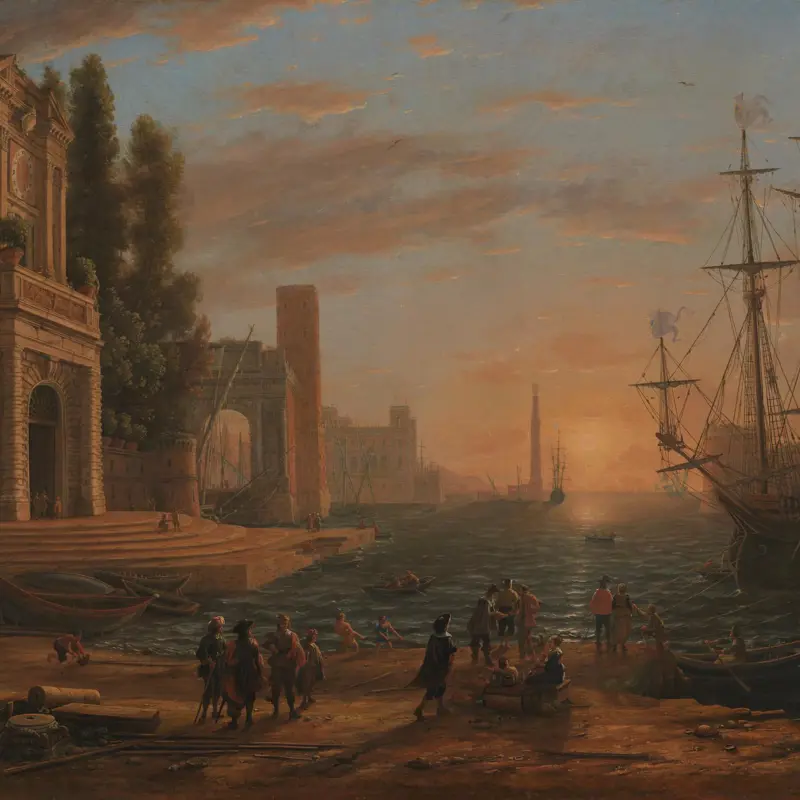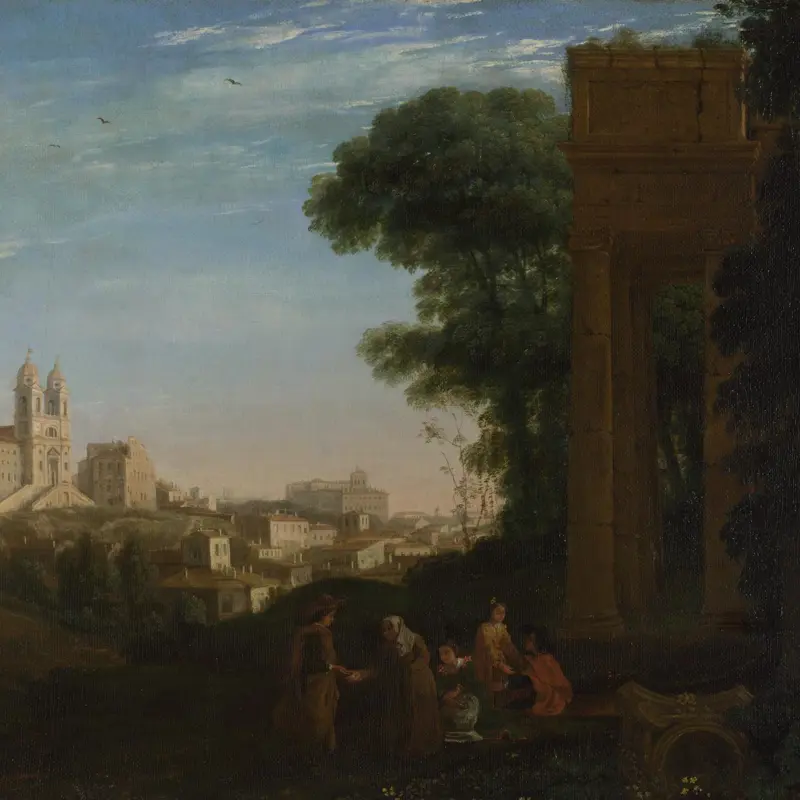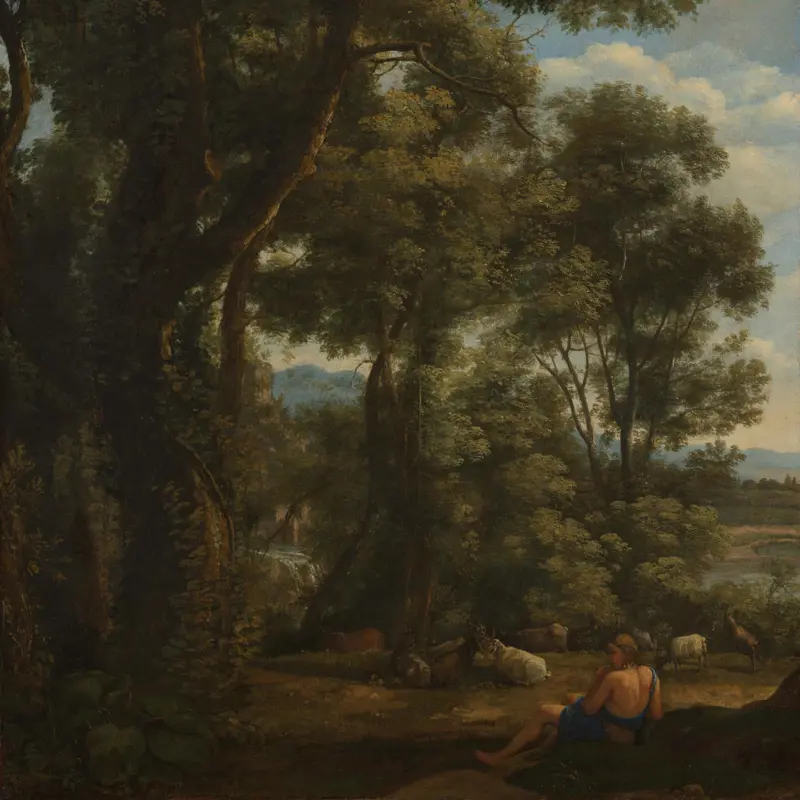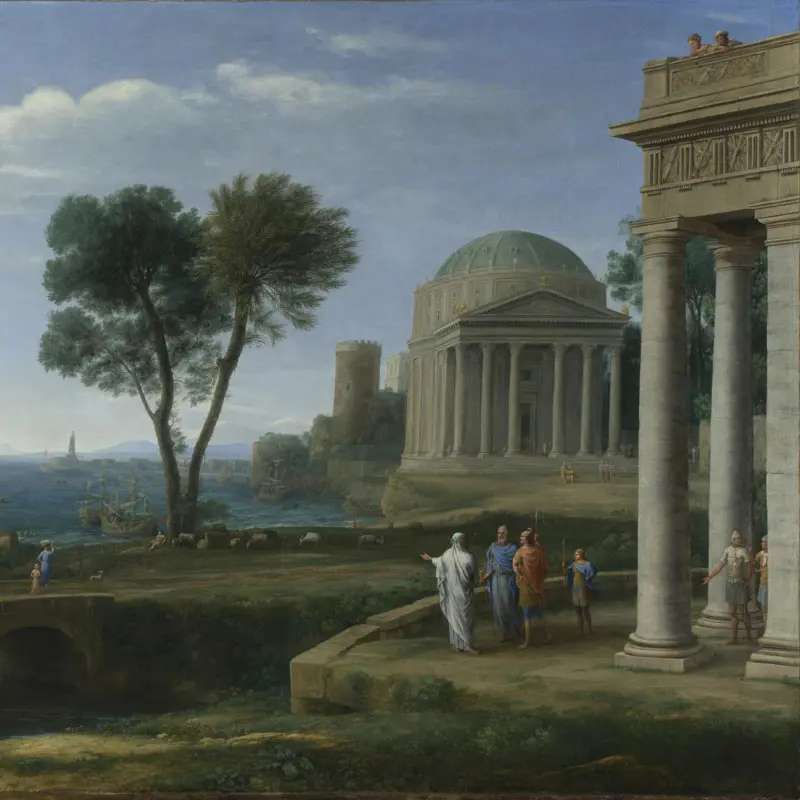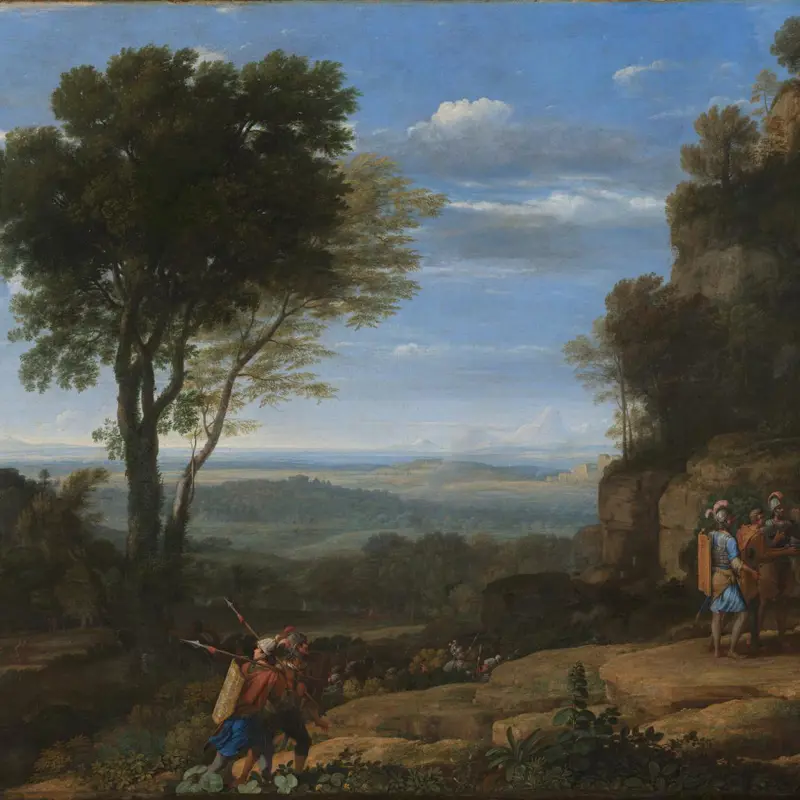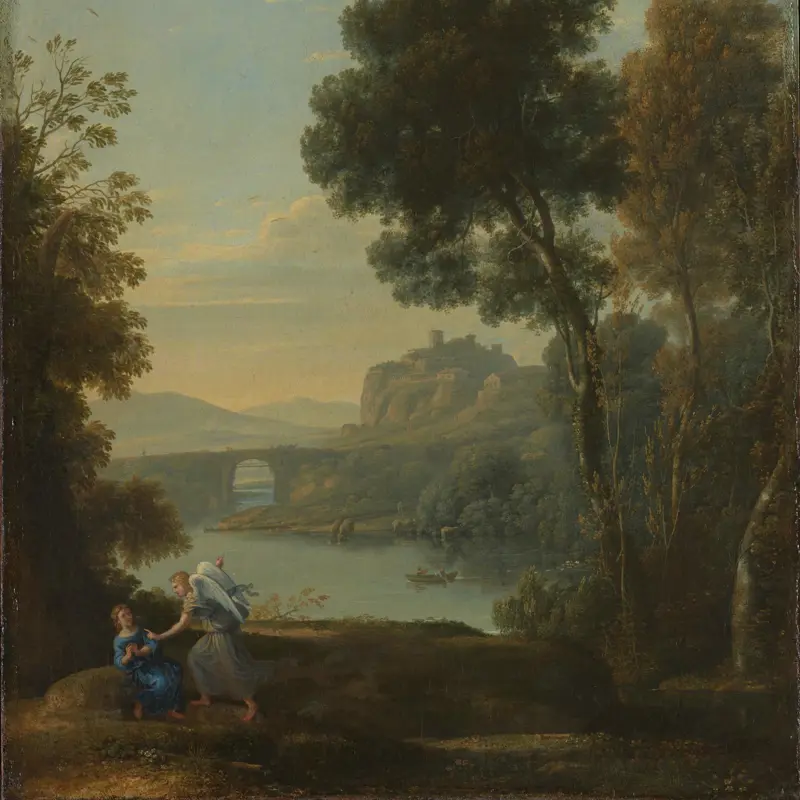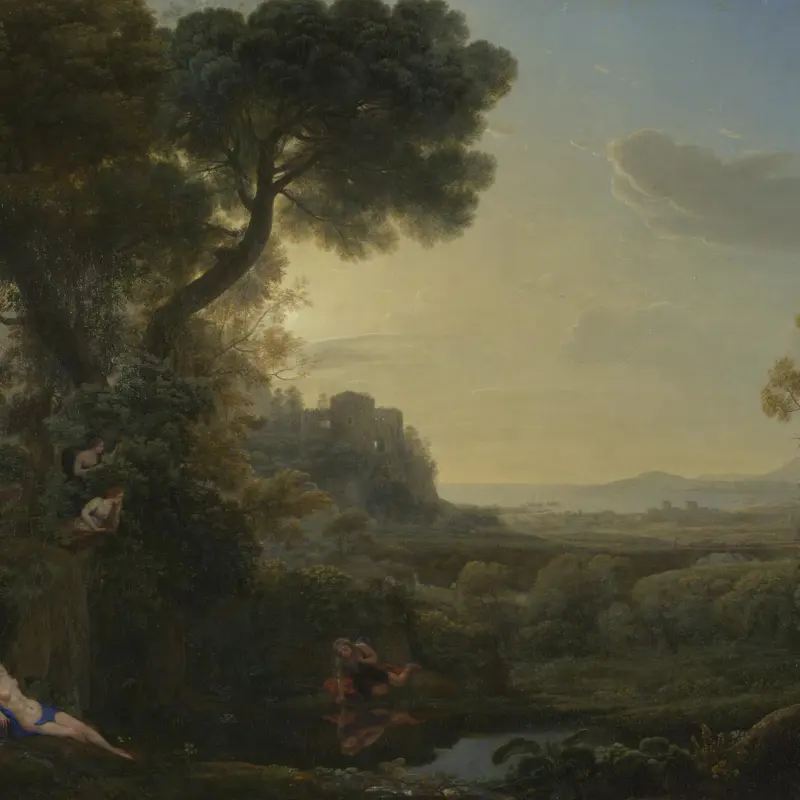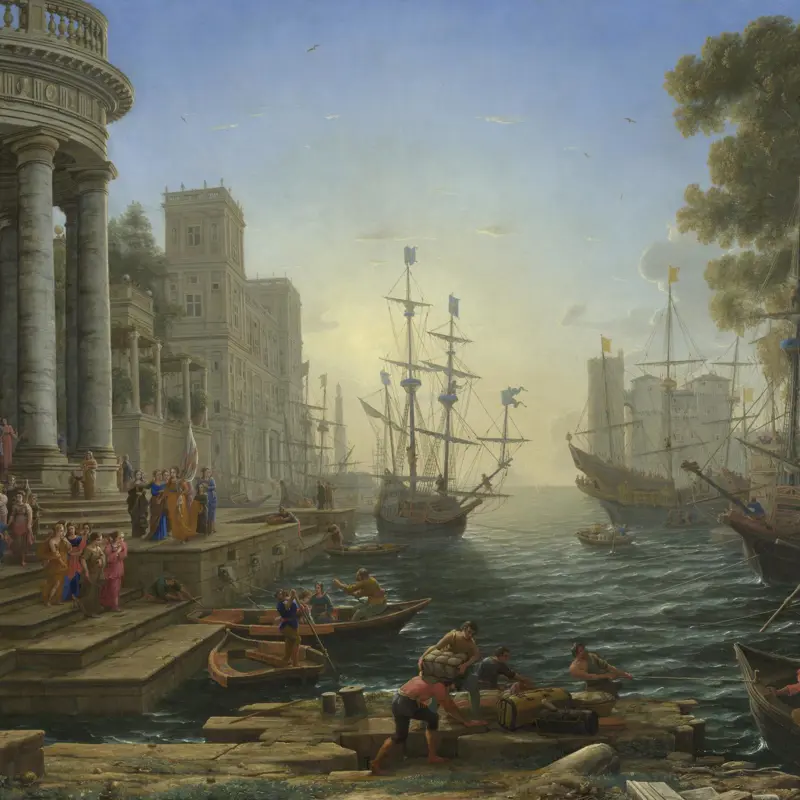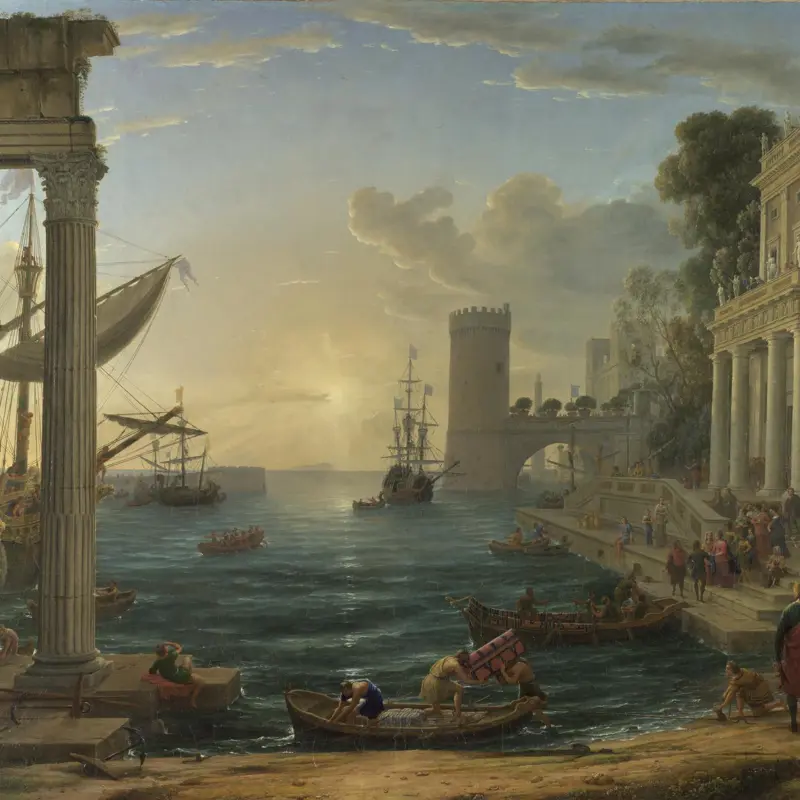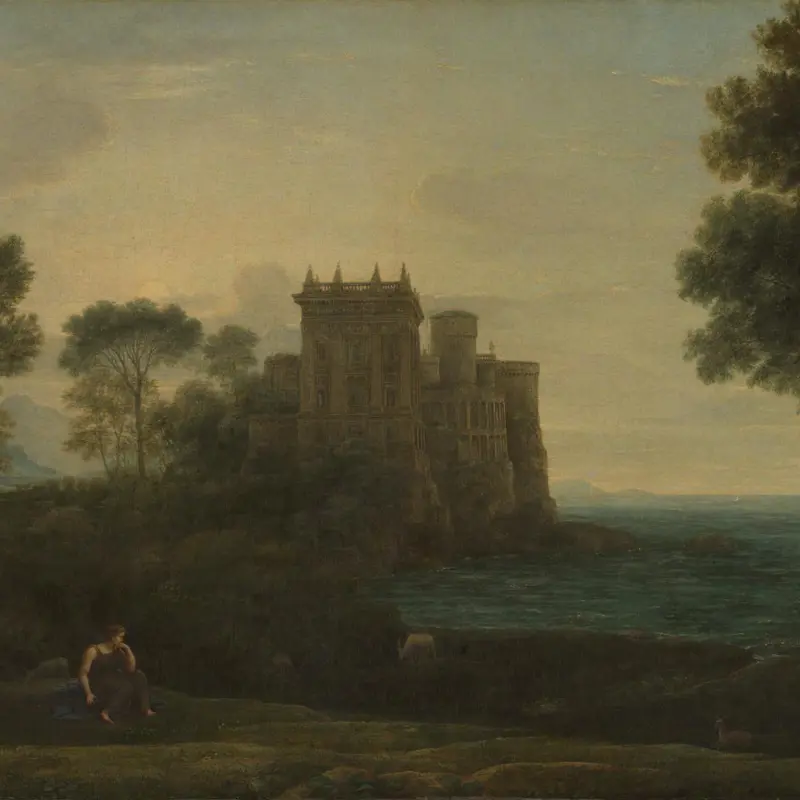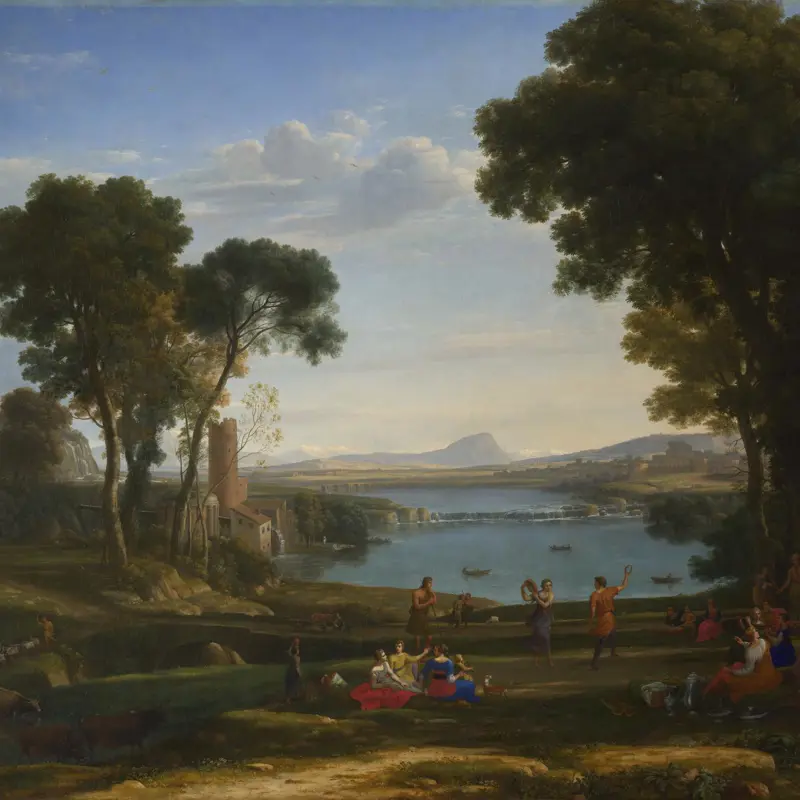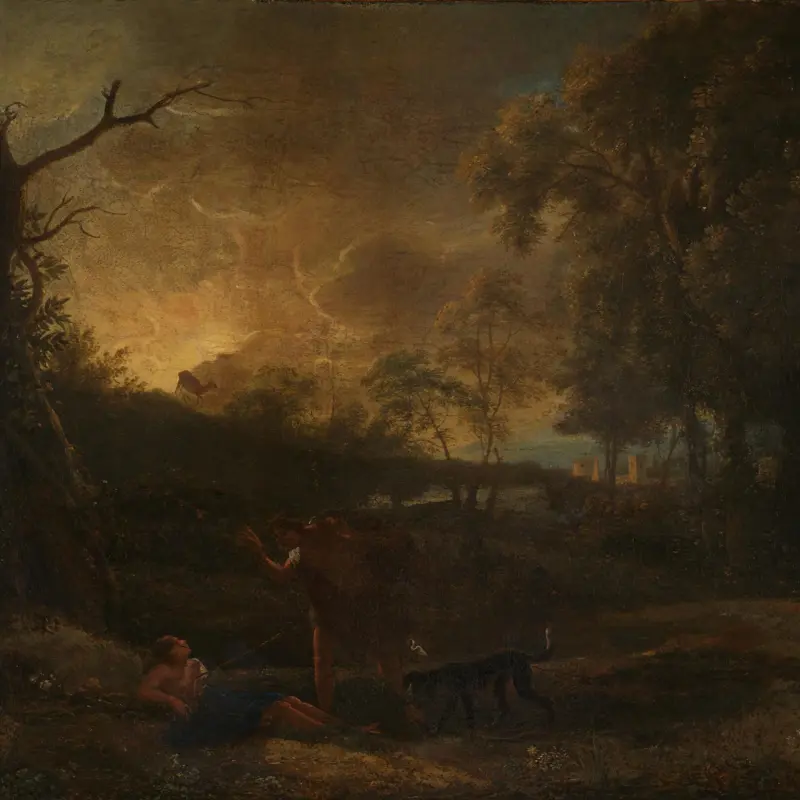Claude, 'Landscape with Cephalus and Procris reunited by Diana', 1645
About the work
Overview
Diana, goddess of hunting, stands between the huntsman Cephalus and his wife Procris. Procris gives her husband a spear, carried here by an attendant, and a magic dog. The painting is loosely based on a story in Ovid’s Metamorphoses. The title suggests that the pair are being reunited after a falling out caused by Procris’s jealousy, but Ovid does not mention Diana being at the reunion. Later in the story, Cephalus accidentally kills Procris with his spear. Perhaps Claude intended his painting to show an alternative happier ending, where Procris is brought back to life.
The composition is inspired by Claude’s trips to the countryside near Rome. Large trees in the centre, painted with precise brushstrokes, frame the figures. The warm, pink sky highlights the subtle green tones and the contrast between light and shade on the foliage and foreground landscape. The reflections of the herdsman and several animals in the pond’s surface are painted with meticulous attention to detail.
Key facts
Details
- Full title
- Landscape with Cephalus and Procris reunited by Diana
- Artist
- Claude
- Artist dates
- 1604/5? - 1682
- Date made
- 1645
- Medium and support
- Oil on canvas
- Dimensions
- 101.5 × 132.8 cm
- Inscription summary
- Signed; Dated
- Acquisition credit
- Bought, 1824
- Inventory number
- NG2
- Location
- Room 29
- Collection
- Main Collection
- Previous owners
Provenance
Additional information
Text extracted from the ‘Provenance’ section of the catalogue entry in Humphrey Wine, ‘National Gallery Catalogues: The Seventeenth Century French Paintings’, London 2001; for further information, see the full catalogue entry.
Bibliography
-
1757A.-J. Dézallier d'Argenville, Voyage pittoresque de Paris, 3rd edn, Paris 1757
-
1764A.-L. de La Live de Jully, Catalogue historique du cabinet de peinture et de sculpture françoise, de M. de La Live, Paris 1764
-
1770P. Remy, Catalogue raisonné des tableaux de différentes écoles… qui composent le cabinet de M. de La Live de Jully, Paris, 5 March 1770
-
1793Paillet, Catalogue des tableaux précieux des écoles d'Italie, de Flandres, de Hollande et de France; figures & bustes… le tout provenant du cabinet de feu M. Choiseul-Praslin, Paris, 18 February 1793 - 25 February 1793
-
1823J. Young, A Catalogue of the Celebrated Collection of Pictures of the Late John Julius Angerstein, Esq: Containing a Finished Etching of Every Picture, and Accompanied with Historical and Biographical Notices, London 1823
-
1824W. Buchanan, Memoirs of Painting: With a Chronological History of the Importation of Pictures by the Great Masters into England Since the French Revolution, London 1824
-
1829
J. Smith, A Catalogue Raisonné of the Works of the Most Eminent Dutch, Flemish, and French Painters: In Which is Included a Short Biographical Notice of the Artists, with a Copious Description of Their Principal Pictures […], 9 vols, London 1829-1842
-
1884Mme Pattison, Claude Lorrain, sa vie et ses oeuvres, Paris 1884
-
1903J. Ruskin, Modern Painters, eds E.T. Cook and A. Wedderburn, The Works of John Ruskin, 39 vols, London 1903
-
1946Martin Davies, National Gallery Catalogues: French School, London 1946
-
1957Martin Davies, National Gallery Catalogues: French School, 2nd edn (revised), London 1957
-
1961M. Röthlisberger, Claude Lorrain: The Paintings, London 1961
-
1975M. Röthlisberger, L'opera completa di Claude Lorrain, Milan 1975
-
1978A. Macintyre and K. Garlick (eds), The Diary of Joseph Farington, vol. 5, New Haven 1978-1984
-
1978M. Kitson, Claude Lorrain: Liber Veritatis, London 1978
-
1982H.D. Russell, Claude Lorrain 1600-1682 (exh. cat. National Gallery of Art, Washington, 17 October 1982 - 2 February 1983), Washington 1982
-
1989H. Langdon, Claude Lorrain, Oxford 1989
-
1991H. Clayson, Painted Love: Prostitution in French Art of the Impressionist Era, New Haven 1991
-
1994H. Wine, Claude: The Poetic Landscape (exh. cat. The National Gallery, London, 26 January - 10 April 1994), London 1994
-
1996J. Edwards, Alexandre-Joseph Paillet: Expert et marchand de tableaux à la fin du XVIIIe siècle, Paris 1996
-
1996H. Langdon, 'The Imaginative Geographies of Claude Lorrain', in C. Chard and H. Langdon (eds), Transports: Travel, Pleasure, and Imaginative Geography, 1660-1830, New Haven 1996, pp. 151-78
-
1997A. Ballantyne, Architecture, Landscape and Liberty: Richard Payne Knight and the Picturesque, Cambridge 1997
-
1999R. Walker, 'Henry Bone's Pencil Drawings in the National Portrait Gallery', The Walpole Society, LXI, 1999, pp. 305-67
-
2000M. Kemp (ed.), The Oxford History of Western Art, Oxford 2000
-
2001H. Wine, National Gallery Catalogues: The Seventeenth Century French Paintings, London 2001
-
2001
C. Baker and T. Henry, The National Gallery: Complete Illustrated Catalogue, London 2001
-
2002C. Pace, 'The Golden Age: The First and Last Days of Mankind: Claude Lorrain and Classical Pastoral, with Special Emphasis on Themes from Ovid's Metamorphoses', Artibus et historiae, XXIII/46, 2002, pp. 127-57
-
2003C. Pace, 'Collecting French Seventeenth-Century Paintings for the Nation', Art History, XXVI/2, 2003, pp. 281-315
About this record
If you know more about this work or have spotted an error, please contact us. Please note that exhibition histories are listed from 2009 onwards. Bibliographies may not be complete; more comprehensive information is available in the National Gallery Library.

